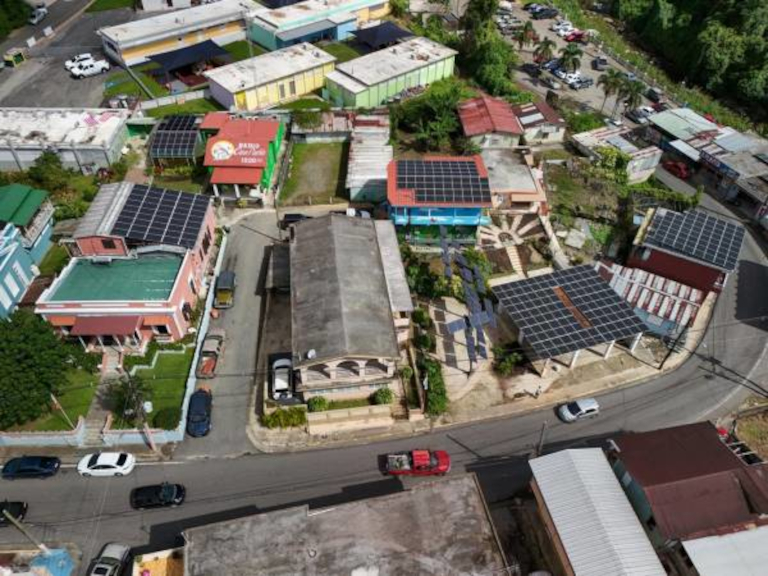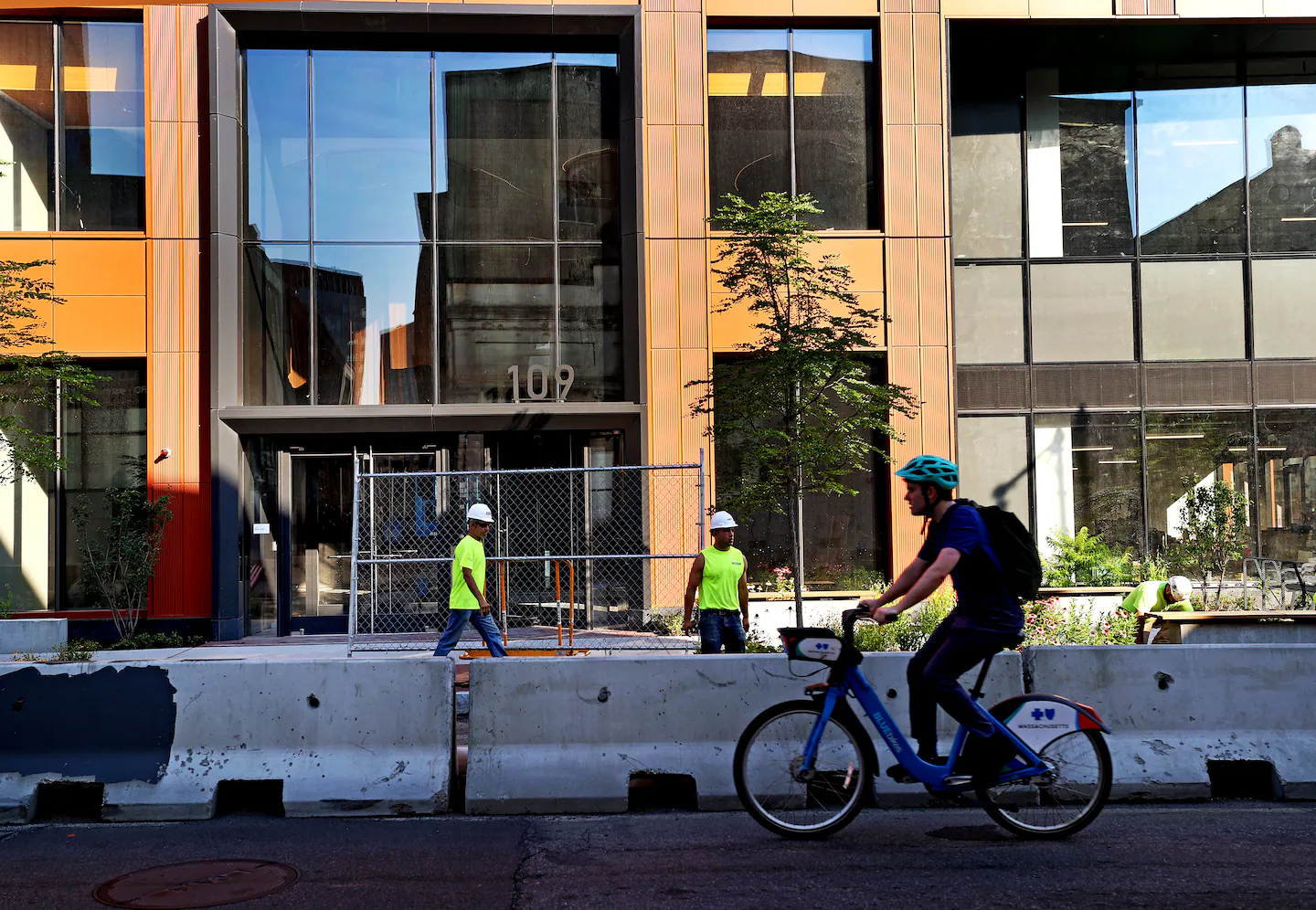The Energy Insurrection with Knowledge Sovereignty: Casa Pueblo and the Community Laboratory for a Just Eco-Social Transition

Introduction
The energy insurrection led by Casa Pueblo constitutes a sustained act of resistance and creation that is transforming the energy landscape in Adjuntas, Puerto Rico. Its starting point is the redefinition of the sun as the primary fuel on the path toward decolonization: moving from a historical dependence on fossil fuels imposed by the United States to a liberation that places the capacity to produce energy—the power to do work—into the hands of the people and the community for better living. Yet installing solar panels as a mere technological substitution would be insufficient if not accompanied by a broader commitment aimed at dismantling the power structures of the colonial, centralized, and unjust energy model that threatens human and planetary health. Hence, building an alternative model from within the community becomes a fundamental step. Within this horizon emerges the Community Laboratory for the Energy Transition, conceived as a project that articulates energy independence and climate justice through a critical and decolonial path.
Background: Hurricane María as the spark for transformation
In 2017, Hurricane María starkly exposed the consequences of decades of neoliberal and colonial austerity policies, leaving the entire island without electricity. In that context, Casa Pueblo—powered by solar energy since 1999—became an oasis in the midst of darkness. It was there that aid was distributed, the community radio station remained on air, energy refuge was provided to Adjuntas, and people dependent on electrical equipment were cared for. Emergency solar systems were also installed in vulnerable households. That response went beyond a gesture of solidarity: it was also an act of rebellion, demonstrating that the critical infrastructure for energy generation could—and should—be in the hands of the people and the community.
Since then, without government backing, Casa Pueblo has carried out more than 400 solar projects and installed over 3,000 photovoltaic panels to address diverse community needs. Among them are systems at the fire station, a movie theater, nursing homes, a barbershop, a school, local businesses, and hundreds of homes, most inhabited by people with chronic health conditions. In doing so, it has guaranteed safety and energy self-sufficiency in crucial areas: from emergency response, communication, and education, to health, entertainment, the local economy, and food preservation. This experience not only promotes energy independence and avoids more than 350 tons of CO₂ emissions each year, but also redefines resilience, shifting it from the individual level to a collective and community force.
Adjuntas Pueblo Solar: the first community microgrid with local governance
In 2020, together with the Honnold Foundation and local businesses, Casa Pueblo launched Adjuntas Pueblo Solar, the first urban solar microgrid in Puerto Rico. With 700 solar panels and a 1 MW battery, this system supplies energy to 14 businesses under a model of community governance through the Asociación Comunitaria de Energía Solar de Adjuntas (ACESA). The association manages, operates, and sets fair tariffs among the merchants themselves, who ceased to be passive clients of an electric monopoly and became co-owners and active managers of their energy.
This legal and community framework constitutes an unprecedented innovation in Puerto Rico and the region, guaranteeing equitable access to clean energy and stable costs. Moreover, the experience has expanded to historically marginalized communities, such as Alto de Cuba, where 30 homes and a community store were energized. Scaling up this type of initiative means embracing energy as a collective right and not as a privilege reserved for those who can afford or finance a solar system: that is the true challenge.
Casa Pueblo and the Plaza de la Independencia Energética, with the “Solar forest” seen from the ‘sky’. These two solar microgrids are interconnected and guarantee energy security for homes, Radio Casa Pueblo 10:20 AM, businesses, the Solar Cinema, and spaces open to the entire community (Photo by José Almodóvar).
Building an Ecosystem of Interconnected Microgrids: The ‘Microgrid Orchestrator’ as Advanced Technology for Social Justice
The innovation of the Microgrid Orchestrator—a technology that enables the interconnection of multiple solar microgrids and the real-time sharing of energy—was validated for the first time in March 2025 in Adjuntas. After three years of development in collaboration with three universities and a U.S. national laboratory, this tool demonstrated its capacity to allow the solar surplus of one system to supply others during blackouts, extending service to vulnerable households and increasing overall system efficiency. The field demonstration interconnected two already-operational microgrids in Adjuntas. The first powers Casa Pueblo’s facilities, its community radio station, and the movie theater, with 45 solar panels (13 kW capacity), a 16 kW AC inverter, and 38.4 kWh of storage. The second, known as the Plaza de la Independencia Energética (Energy Independence Plaza), features 55 kW of photovoltaic generation, 79 kWh of battery storage, and a 44 kW inverter. This plaza provides free electricity to five homes, a local business, and several public connection points; it also offers potable water, satellite internet, a community garden, native flora gardens, and works by local artists, integrating energy resilience with food sovereignty, culture, and community life.
Each microgrid can operate autonomously with its own controllers. However, thanks to the integration of the Microgrid Orchestrator and a direct current link (DC-interlink), a stable and bidirectional connection was achieved, with precise control of active and reactive power flows, ensuring system stability. This validation was not a laboratory experiment under controlled conditions, but a test in real-life scenarios, with climatic and social factors as they occur in everyday life. Currently, five microgrids have already been completed in the Adjuntas area under this vision of community transformation, with plans for expansion in the coming years. This ecosystem makes Adjuntas the first energetically interconnected town in the Caribbean, demonstrating that advanced technology, when combined with democratic governance, bottom-up planning, and ecological justice, can become a driving force for profound transformation in the face of political crises, climate change, and structural inequalities.
Engineer and researcher Maximiliano Ferrari shares data on the interconnection of microgrids through Casa Pueblo’s ‘orchestrator’ with the author and students from the University of Sagrado Corazón (Photo: Michelle Estrada).
The Community Laboratory for the Energy Transition: Science with Roots and Wings for Change
In this context, the Community Laboratory for the Energy Transition emerges as a living platform for technical training, the design of local solutions, the open exchange of knowledge, and the creation of local capacities. It represents the crystallization of decades of Casa Pueblo’s educational, environmental, and organizational work, and is envisioned as a strategic tool for advancing toward a just eco-social transition.
Why a community laboratory? Because, just as Indigenous peoples and ancestral cultures have sustained their own systems of knowledge within ethical frameworks of respect for nature, today it is essential to reclaim these sovereignties of knowledge. Without this, energy transitions run the risk of reproducing dependencies: external technical expertise associated with new technologies often imposes itself through vertical logics that reduce communities to mere recipients of solutions designed elsewhere.
A laboratory in the hands of the community breaks that logic by inserting a self-determined knowledge system that allows the community to diagnose, research, and experiment based on its own realities. In this way, the community ceases to be an object of study and becomes an active subject in knowledge production and a protagonist of its own solutions. Furthermore, the laboratory trains young people, technicians, educators, and leaders in renewable energies, microgrids, energy efficiency, and sustainability. This not only retains talent and creates economic opportunities, but also cultivates a scientific citizenship with real decision-making capacity.
Finally, generating its own data and evidence becomes essential for demanding rights and defending territory. The laboratory thus becomes a tool of environmental justice that democratizes science and puts it at the service of social transformation, creating solutions adapted to specific contexts rather than importing external models. At the same time, it facilitates the development of strategies that are replicable and adaptable for other vulnerable communities, strengthening their struggles for energy autonomy.
Scaling Strategy: Science and Community as an Inseparable Pair
Casa Pueblo has defined a clear strategy to scale up its impact: articulating community action with scientific innovation and culture as pillars of an eco-social model oriented toward alternative development. What is being built in Adjuntas is not an exclusive or closed model, but an open and replicable proposal that emerges from community ground and projects itself as a concrete alternative to structural inaction.
From this experience, we call on more communities—in Puerto Rico, across the Caribbean, and in all corners of the planet—to rise up and chart their own paths toward climate justice. We cannot remain idle, waiting for governments that, summit after summit—as will likely happen again at COP30 in Brasília—persist in evading their historical responsibility. In the face of their systematic inaction and denial of the most urgent challenge of our era, our responses must be accelerated, nourished by collective knowledge, interconnected, and deeply emancipatory. From the local, solutions with global resonance are already taking shape. Let Brasília—and all those who still resist action—hear the peoples: the climate clock does not stop, and the power to transform our future is also in our hands.
Publications and further readings
Rivera-Rodriguez, S., Santiago-Santiago, A., R-Madera, S., Padilla, M., Varas-Díaz, N., Rivera-Bustelo, K., Mercado-Rios, C., Vertovec, J., Massol-Deyá, A., Ramos, J., Reid, G., Rodríguez-Banch, R., Grove, K., & Varas-Rodríguez, E. (2025). Disaster governance, energy insecurity, and public health in rural Puerto Rico: How communities resist political abandonment. Frontiers in Public Health, Disaster and Emergency Medicine. Manuscript submitted for publication.
Massol-Deyá, A. 2024. Democracia y energía: Desafiando la economía de los combustibles fósiles por un país propio. 2da Edición (Revisada y ampliada). Ediciones Callejón. 209pp.
Massol-Deyá, A. 2023. Casa Pueblo: Community Struggles for Social Development and Protection of Natural Resources. In ‘Decolonizing Paradise’. Peter Lang. 83-124.
Massol-Deyá, A. 2021. La revolución energética: un modelo de autogestión, sustentabilidad, y soberanía comunitaria en Puerto Rico. In ‘Las Réplicas del Desastre’. Ediciones Callejón. 321-330.
Massol-Deyá, A. 2020. Ciencia para la insurgencia. Ediciones Callejón. 281pp.
Teaser photo credit: Casa Pueblo and the Plaza de la Independencia Energética, with the “Solar forest” seen from the ‘sky’. These two solar microgrids are interconnected and guarantee energy security for homes, Radio Casa Pueblo 10:20 AM, businesses, the Solar Cinema, and spaces open to the entire community (Photo by José Almodóvar).



